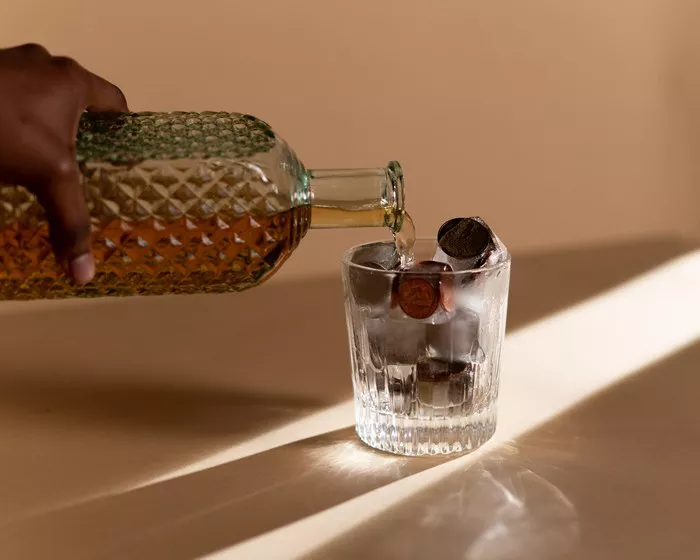Brandy, often associated with sophistication and elegance, holds a significant place in the world of distilled spirits. Originating from the distillation of wine, brandy stands as a testament to centuries-old craftsmanship and expertise. The process of creating brandy involves intricate steps that transform wine into a spirit renowned for its complexity and depth of flavor. To comprehend the essence of brandy, it is vital to delve into its history, production methods, and diverse variations.
A Historical Glimpse into Brandy’s Origins
The roots of brandy trace back to ancient civilizations where the art of distillation began. Its evolution is intertwined with the development of distillation techniques across various cultures, notably the Moors in Spain, who are credited with introducing the concept of distillation to Europe during the Middle Ages.
The term “brandy” finds its etymological origins in the Dutch word “brandewijn,” translating to “burnt wine.” Initially considered a byproduct or a means of preserving wine during transportation, brandy gained popularity due to its extended shelf life. As explorers traversed the globe, brandy became a sought-after commodity, appreciated for its durability and concentrated flavors.
The Intricacies of Brandy Production
At its core, brandy production revolves around the distillation of wine. The process begins with the careful selection of grapes, as the quality and variety greatly impact the final product. Grapes chosen for brandy production differ from those intended for table wine, often characterized by higher acidity and lower sugar content, contributing to a more suitable base for distillation.
Once the grapes are harvested and fermented into wine, the crucial phase of distillation commences. Distillation involves heating the wine in a still, where alcohol vaporizes at a lower temperature than water, allowing separation and concentration of alcohol. The resulting liquid, known as “low wine,” undergoes a second distillation to refine its flavors and increase its alcoholic strength.
Varieties and Styles of Brandy
The world of brandy encompasses an array of styles and classifications, each with its unique characteristics shaped by geographical regions, grape varieties, and production methods. Cognac and Armagnac, both originating from France, stand as distinguished examples of brandy with protected geographical indications, denoting specific production regions and stringent quality standards.
Cognac, crafted in the Cognac region, undergoes a double distillation process in copper pot stills and matures in French oak barrels, yielding a luxurious spirit recognized for its elegance and complexity. Armagnac, produced in Gascony, embraces a single distillation method in column stills, resulting in a robust and aromatic brandy with a distinct character.
Outside of France, brandy production spans across the globe, with notable variants like American brandy, Spanish brandy, and Pisco from South America. American brandy, often made from grape varieties such as California’s Zinfandel and Colombard, showcases a spectrum of styles ranging from light and fruity to rich and oak-aged expressions.
Spanish brandy, esteemed for its solera aging process, incorporates a fractional blending system that allows for a continuous maturation cycle, creating harmonious and complex flavor profiles. Pisco, originating from Peru and Chile, undergoes a unique distillation process using copper pot stills, resulting in an unaged brandy characterized by its grape varietal characteristics.
The Art of Brandy Appreciation
Appreciating brandy extends beyond its production; it involves understanding its nuanced flavors and aromas. The tasting experience of brandy involves careful observation of its appearance, followed by nosing to detect the intricate bouquet comprising fruity, floral, spicy, and oak-derived notes.
Upon savoring a sip, one can discern the complexities of brandy, appreciating its texture, balance, and the interplay of flavors. The aging process significantly influences the taste profile, with younger brandies exuding vibrant fruitiness while older expressions exhibit sophisticated layers of dried fruits, caramel, and nuanced oakiness.
Brandy enthusiasts often explore the spirit through guided tastings, where comparisons between different styles and ages offer a deeper understanding of its diverse characteristics. Food pairings also play a pivotal role in enhancing the brandy experience, with its versatility allowing for harmonious combinations with various cuisines and desserts.
Is Brandy a Distilled Spirit: Conclusion
In conclusion, brandy unequivocally stands as a distilled spirit, embodying centuries of tradition, craftsmanship, and artistry. From its humble origins as a preservation method to becoming a symbol of sophistication and refinement, brandy has evolved into a multifaceted spirit cherished by connoisseurs worldwide.
The journey from grape to glass involves a meticulous process that highlights the expertise of distillers and the influence of terroir on the final product. With its diverse styles, ranging from the opulence of Cognac to the rustic allure of Armagnac and the innovative expressions emerging globally, brandy continues to captivate enthusiasts seeking depth, complexity, and a sensorial journey in every sip. Whether enjoyed neat, in cocktails, or as a companion to culinary delights, brandy remains a timeless embodiment of the art of distillation.


